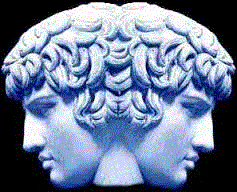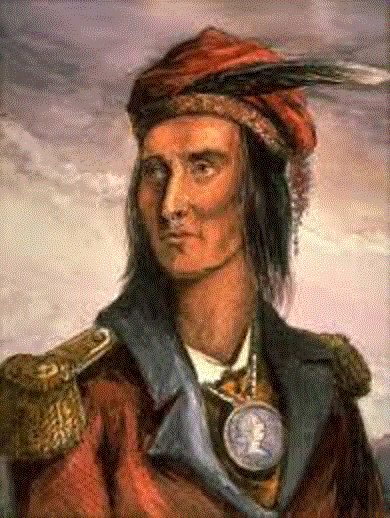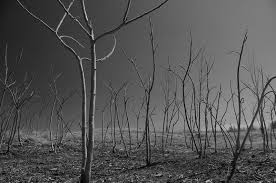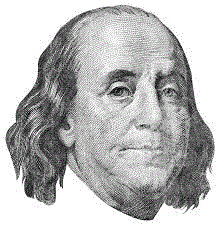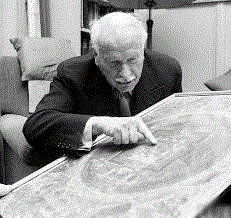– Research findings supporting an intuitive approach.
– M. R. J. (1984)
“….when the (the world at large) …. shall discover and really appreciate the truths which underlie this vast problem of sex. It will be like ‘the light that never shone on sea or land,’ and has to come to men through the Theosophical Society. That light will lead on and up to the true spiritual intuition. Then…. ‘the world will have a race of Buddhas and Christs…'” – H.P. Blavatsky, “The Secret Doctrine,” vol. II, p. 415
Conservation Therapy is based on the premise that man can best cause psychological cure or development in himself by a conservation of his sexual energies and the living of a moderate lifestyle in every aspect. It has been the traditional viewpoint throughout history that personal energy is lost in sex expression, but until recently this premise has not been supported by biochemical evidence. Until present times hard physical work was continually necessary just for basic survival. A man soon learned he had to conserve his energies for survival over pleasure. It may be that we have only so much personal resource or “energy” at our command. Possibly it is not mere coincidence that a traditional puritanism in this country coincided with the wealthiest and most creative society the world has known.
For the male, the highest concentrations of valuable chemicals in the body are contained in seminal fluid. Why this is so is a bit of a mystery when looked at superficially, since the primary purpose of seminal fluid is to provide a vehicle for spermatazoa. While it has been proven that women absorb some of these valuable chemicals from the male in coitus, it may also be reasonable to assume that if not frequently spent in sex they become available for mental and bodily development. It is curious that in several aspects the chemistry of male reproductive fluid and the brain are more similar than any other tissues.
Modern psychology is more in the class of voodoo or shamanism than of a true science. Actually shamanism may show better results than psychotherapy. The true status of psychology is demonstrated in legal battles where the prosecution’s psychologist declares the defendent sane and the defense’s psychologist declares him insane. The judge or jury then decides which psychologist is correct. If a true psychological system existed, then the man could scientifically be declared sane or insane and both psychologists would agree. That present psychology is impotent to bring about improvement or cure in the mentally afflicted is demonstrated by dozens of its own studies. Basically psychotherapy has been found no more effective than a placebo. Many studies have shown that psychotherapy is even harmful and prevents a person from curing himself as quickly as he may if left entirely alone. (See Martin Gross’s “The Psychological Society.”)
There is no “quick fix” for psychological ills. While insight may occassionally result in rapid change, in most cases bringing inner changes about is a time-consuming process which requires effort as any other accomplishment. Many modern psychological systems recommend ways to “hold the head.” They recommend the adopting of a particular attitude or perception that will automatically put things in a new light and make previous problems disappear. These systems are all variations of the “positive thinking” philosophy. They result in the inhibition of serious problems and the narrowing of perspective to a shallow and overly simplistic outlook, The real problems “go underground,” so to speak, and the person is impoverished from lack of depth. [The great difficulty of change Theosophical Doctrines would assign to the aeons of karma and resultant skandhas our psychological nature is composed of. – Ed.]
A true psychological system is holistic in nature. Every aspect of a person’s life affects his mentality and emotions. Sexual lifestyle is a primary aspect of this holism since it is such a central facet in every-one’s life. Even psychological systems that label themselves “holistic” ignore this fact. Increasing sexual intensity, frequency or variety is lauded, but the concept of what actually constitutes a healthy sexual lifestyle is completely ignored. A hundred diets are prescribed for maximum health but there is no sexual diet recommended. Certain foods are found best for the human organism and we may also suppose that a certain sexual lifestyle is also conductive to greatest psychological and physical health. This proper sexual life-style is not subject to fickle human whim or philosophy but has been designed into our organism by the past millions years of evolution.
If on a basic level the human organism has been designed according to certain psychological principles developed through eons of evolution, it is reasonable to assume a person must live in accordance with these principles to achieve maximum mental health. If a sex role is designed into the body on a basic biochemical and genetic level, can we ignore this foundation and still be a whole and healthy person? [In the Theosophic perspective, genetic design is the result of aeons of karma of the race and equally on the individual level. – Ed.]
A person who is not intellectually or philosophically in tune with this biological determinism may be tortured on an inner level and never learn the source of his torment. It would be irrelevant if he agreed with this programming; the effects would continue nonetheless. An option may be to consider that our intellectual preconceptions may be shallow in comparison to the complexity and wisdom in the design of Nature.
Conservation Therapy contends that psychological cure and any further development will result from the conservation of personal sexual energy coupled with progressive introspection or self-analysis. Nature has placed in our make-up a proper sex life and sex role, and we must live in accordance with this inner design to become fully functioning humans, as well as to provide a basis for any possible further development mentally or spiritually. In essence it is a system originating from intuition and practical observation. While it is supported by recent scientific findings in bio-chemistry and brain functioning, its validity can only be established through application and an attempt at objective evaluation of the effects of sexual lifestyle on mentality.
This paper attempts basically to deal with research findings and introspection is not dealt with. Elaborate theorizing should be avoided in self-analysis and a common sense attitude toward evaluating one’s own attitudes and reaction patterns should be attempted. Self-critical meditational systems such as contained in Richard Rose’s “Albigen Papers” and “Meditation and Visualization Papers” can be especially valuable.
RESEARCH FINDINGS
Men have several times the testosterone levels of women. Testosterone is the primary sex hormone in males, as progesterons is in females, and is responsible for a host of psychological and motivational characteristics. Besides physical characteristics, testosterone is responsible for a host of psychological and motivational characteristics in the male. Testosterone has an invigorating effect on the brain, and neurophysiologist Sachair has likened its effects to that of a psychoactive drug. [1]
High blood testosterone levels have been found to correlate with hightened intelligence in males (as well as females) [2] and have also been found to correlate with greater agression, motivation, energy level and positive mood.[3] Testesterone is produced in the testes and general energy level, mood and motivation have been found to decrease in castrates shortly after castration (due to accident or disease). Energy, mood and motivation increase immediately after testosterone is administered to natural castrates with inactive testes. Energy level has been found to be directly related to amount of administered testosterone. Energy level is high after administration and declines steadily until the next administration when it elevates again. Complete lack of testosterone in the post-pubescent male results in “eunuchoidism,” the victim of which is characterized as apathetic, withdrawn, depressed, lacking initiative and hypoactive.
The affect of testosterons on the brain may be the primary chemical reason why men have historically out-distanced women in every avenue of mental achievement. Even today with the many opportunities available to women, men are still responsible for 98% of all patents issued.[4] While women’s primary sexual hormone, progesterone, has been found related to mood, no relationship between progesterone levels and intelligence has been established. Recently the superior spatial ability of men has been linked to testosterone.[5] Apparently it must be present in adequate amounts during a critical developmental stage to augment the ability.
Low testosterone levels have been found in all severe forms of mental problems in males, including schizophronia, psychosis, and anorexia nervosa. [6] Heightened sexual activity is present in most severe mental problems in males (as well as females.) [7] Kraemer (1967) [8] established that lower than normal sexual frequency in males elevates testosterone levels, and we may suppose it has a positive effect on IQ, mood, and motivation because of the effects of the elevated testosterone. In periodic schizophrenics, episodes have been found to always be presaged by increased sexual activity.[9] A reasonable supposition from this evidence is that increased sexual activity may aggravate severe mental problems.
Levels of prostaglandins in the body have been found to be controlled by testosterons levels. [10] It appears that elevated testosterons levels also cause an elevation in prostaglandin levels. Prostaglandins are found throughout the body, having been found in at least 23 different areas. They are produced locally throughout the body, but by far the highest concentrations are produced and stored in the male seminal vesicles. The seminal vesicles produce 400 times more than any other area of the body. [11] Because of the seminal vesicles, males produce many times the prostaglandins that females do. Prostaglandins produce very strong reactions in living tussue and are perhaps the most powerful biologicaly-active, naturally occurring substance known. Prostaglandins are involved in many body processes including blood pressure levels, pain and inflammation, and neuro-transmission. It is thought that they may control the turn-over rate of serotonin in the brain since both serotonin and prostaglandins produce similar effects.
It is curious that almost no animals produce prostaglandins, while in nearly every other way human and animal biochemistry is identical. Only the rabbit, sheep and a few monkeys produce prostaglandins, and humans many hundreds of times more than these animals. As the prostaglandins are produced in the male’s seminal vesicles, very large amounts are in male reproductive fluid. Men “waste” more prostaglandins in a sex act than women produce in their entire body in a single day. [12, 13]
It is a question just why prostaglandins are present in male reproductive fluid, since they have no reaction with spermatozoa and have been proven to do nothing to insure impregnation in the female. It has been found that females absorb male prostaglandins in the vagina and uterus, [15] and actually have special receptor cells in the uterine wall to receive male prostaglandins. [16] An old wive’s tale holds that women gain strength from men, and on this very basic chemical level this observation seems to be validated. Prostaglandins are one of the most refined of the body’s products and women a absorb these “super-chemicals” from males.
Since seminal fluid has no apparent purpose than as a vehicle for spermatozoa, why does it have such a concentration of valuable body chemicals? An ounce has been found to be basically the concentration of the most valuable chemicals from 60 ounces of blood. No two tissues in the body show greater similarity in their lecithin, colesterin and phosphorous contents than the brain amd the seminal fluid. [17] It has proportionally more fructose, citric acid, spermine and prostaglandins than any other tissue in the body. It is also richer than most any other tissue in zinc, ascorbic acid, inositol, glyceryl, phosphory-choline and free amino acids. It has 33 times the neutral maino acids, 28 times the acidic amino acids and 57 times the basic amino acids as the blood. [18] Women may absorb body chemicals from the male other than prostaglandins to enrich body chemistry and health.
Another possibility for the chemical richness of reproductive fluid is that, through a conservative sexual lifestyle, a man may reabsorb and utilize these valuable body chemicals. Instead of producing reproductive fluid, he may use these same chemicals to invigorate the brain/body. While modern psychology believes sexual inhibition unhealthy mentally and physically, it fails to account for the fact that such giants as Pythagoras, Plato., Aristotle, da Vinci, Spinoza, Bacon, Newton, Kant, Beethoven, Spencer, and Tesla were celibates. The purpose here is not to universally recommend celibacy but to point out the absurdity of the modern position.
Several studies have indicated that the human brain is programmed either male or female in the fetal stage. The brain has two “programs” for sex role during life and the level of the hormone testosterone in the womb determines which of these programs in “kicked in.” Once the program is established, the person has a male or female-programmed brain for life. The critical time is the fourth to seventh month during the development of the hypothalmus. If high levels of testosterone are present in the fetus, then the brain is programmed with a male sex-role. If low levels are present, the brain is programmed famale. [20, 21] This is true regardless of the genetic sex of the child. [The Theosophical teaching is that men and women are gradually evolving more alike, but this is a very long process and would not be decernible in historical times. – ed.]
If testosterone levels are high enough in the womb, a female fetus will even develop male sexual organs, male genitalia with an empty scrotum. Very low levels of testosterone in the genetically male fetus may result in intra-abdominal testes and lack of male sex organ. If pregnant women carrying a female fetus are submitted to high testosterone levels, it has been found the girl will develop into what is tradionally called a “tomboy.” This has been characterized by Money & Erhardt (1971, 1972) as “vigorous energy expenditure in athletics, indifference to the rehearsal of ‘dollplay’ and greater than average selection of male playmates and nonfeminine utilitarian clothing.” It must be pointed out that for a female fetus to be exposed to a high level of testosterone (or a male fetus to low levels) is a rare event. The above studies were run on women who were being administered testosterone for medical reasons. That a homosexual’s brain would be fetally-programmed in an opposite sex-role would not hold water in almost all cases.
While the brain has been proven to be programmed male or female at birth, it has been discovered that there is even a more basic male-female difference. Women have extensive brain connections between the pre-frontal lobes and the cerebellum which man don’t have at all. [22] The pre-frontal lobes are thought to be concerned with empathy and higher intellectual functions while the cerebellum is concerned with instinct, sex and movement. These connections may indicate that women’s empathy and logic are tempered with sexual and instinctual aspects that man’s are not.
Progesterone is the primary sexual hormone in women and is responsible for all the secondary sexual aspects. Levels of progosterone have been found to be cyclic and vary with the monthly menstrual cycle. Highest levels occur at ovulation and this has also been found to be the time of peak feeling of well-being during the monthly cycle. Another time of peak progesterone production is during pregnancy which many women have described as the best period of their lives. It has been found that testosterone inhibits progesterone’s production of feminine bodily characteristics. [23] Lesbians have been found to often have heightened levels of testosterone and this may account for the masculine physical characteristics taken on by many lesbians. [24]
In these times of day-care centers and bottle-feeding, it is significant that it has been found that infants breast-fed and raised by their mothers rather than a nanny or day-care center develod higher IQ’s and better social adaptation than their peers. In the 40’s and 50’s in the Israeli kibbutz movement an extensive experiment was made to dissolve traditional family lifestyle and also establish a community with “sexual equality” in every aspect. Women were equally assigned jobs as men, from mechanics to business managers. Children were raised in day-care centers and boys and girls had communal dormitories. Every effort was made to isolate kibbutz members from outside influence. The system began breaking down on several fronts despite the idealism involved. Women began competing and fighting among themselves to secure jobs near the nursery and thus be near their children. Upon pubescence girls flatly refused to undress in front of the boys and thus segregated dormitories became necessary. Women began refusing to take higher level management jobs. Today traditional roles are followed in nearly every aspect in the kibbutzim. [25] Six studies have been carried out on the movement, and all have come to the same conclusion as to their failure idealistically despite every precaution. According to Margaret Mead, among the hundreds of known cultures, there have been none that have not discrminated different social tasks between men and women. [26]
Women are not biochemically equipped as well as men to cope with the stressful lifestyles found in business management and other high-driving professions. On one level women do not chemically respond to stress in the same manner men do. [27] Under stressful situations men’s adrenaline levels go up drastically while women’s exhibit little change. Adrenaline is the body’s chief fast-energy chemical that enables great energy and alertness over a short period of time.
In studies of women in stressful occupations, disturbing effects on mental and physical health are revealed. In one study of 141 women M.D.’s by Paula Clayton of St. Louis University, it was found that 50% had a history of primary depression. Of 114 women Ph.D.’s, 32% suffered from a history of depression. A study at U.S.C. unfortunately discovered that an unbelievable 1 in 15 female M.D.’s commit suicide. [28] In the last twenty years suicide rates among women have dramatically inereased, [29] and this may correlate with the changing lifestyles among women over this period.
During the premenstrual week women are especially susceptible to the effects of stress. It has been found that approximately 25% of women are severly incapacitated in mode, concentration and general performance during the premenstrual week while 90% are incapacitated to some degree. Numerous studies have found that between 50% to 80% of female crime, [30] mental incarcerations and suicides occur during the premenstrual week. [31] In England the Royal Society for the Preventions of Accidents has issued a pamphlet warning women about driving during this time since this is when 50% of accidents involving females occur.
Progesterons seems to be primarily responsible for mood and performance levels in women and this significantly is at its lowest levels during the premenstrual week. While women are subject to monthly cycles in mood and performance due to progesterone fluctuation, men’s performance and mood is relatively stable due to stable testesterene levels. The above evidence is an incontestable reason why women are not adequately equipped for some jobs – air traffic controllers for instance. This would apply to all occupations dealing with critical and highly stressful circumstances.
It is likely that man is genetically encoded with a particular lifestyle, including sexuality, which is conducive to his greatest mental and physical health. Nature cannot design an organism without including within that design a specific lifestyle that is appropriate to it, a genetic code of conduct or “morality” is inherent in our very structure. Some things are good for us and some things are bad. If they are bad for us then they are antagonistic to our genetically determinded biological and psychological design.
A study over a 10 year period at the Yale-New Haven Psychiatric Clinic found that 77% of young incest victims had abnormal EEG patterns and nearly 30% of these victims suffered epileptic fits. [32] The researcher went so far as to infer that possibly the children with abnormal EEG’s may have seduced their parents because of their abnormal brains! He does not even mention the likely and obvious case that the traunatic incest altered their brain chemistry and even caused psychosis and epilepsy. Modern psychology does not consider that a physical act can have an inherent moral reaction that extends to the biolgical level.
While Nature provides that our brains be encoded male or female, she undoubtedly also extends her design into our sexual lifestyles. Within our biological design is a sexual lifestyle that is conducive to greatest physical and psychological health. Is it mere coincidence that the current outbreak of sexual diseases such as herpes and AIDS occurs in the midst of the sexual revolution? Possibly 30% of people in this country age 20 to 40 have a sexual disease. Biologically we may not be designed for a “sexual revolution,” high sexual frequency or promiscuity. It is a little known fact that refraining from sex will cause herpes symptons to disappear, only for the symptoms to reappear when sexually excited. AIDS in only one of numerous diseases that occur principally among homosexuals. Disease of the colon such as ambiasis, shigellosis and giardiasis are others. [33] Biologically we may not be designed to have seminal fluid in the colon or feces in the urethra.
Male homosexuals have generally been found to have slightly lower but near normal testosterone levels. What is amazing, however, is that it has been found that they convert testosterone to the feminine hormone estrogen. [34] This strange phenomenom could be the result of the mental attitude of the effeminate male homosexual. As is apparent in the placebo affect, mental attitude has the ability to alter body chemistry. The same may hold true for the findings that at least 30% of lesbians have high male hormone testosterone levels. [35, 36] Her aggressive masculine attitude may cause a higher adrenal output of testosterone. The woman with the passive role in the lesbian relationship could not be expected to have higher testosterone levels, since she still maintains a passive feminine attitude. A detrimental effect is also realized in children raised by lesbian mothers. In a study by Beverly Hoeffer (U.C. of San Francisco) it was discovered that on personality tests 40% of such boys scored feminine as to sex role while 50% of such girls scored masculine. [37]
In 1973 the American Psychiatric Association’s 55,000 members voted to no longer regard homosexuality as a disease but as a sane matter of preference. Homosexuality is either something appropriate or antagonistic in Nature’s biochemical and psychological design of the human organism. It is not something that can possibly be voted on or subject to the whim of the populace. If homosexuality is appropriate to our organism, why are there so many diseases associated with it? Anything appropriate to out makeup should have no diseases associated with it. There are, for instance, no diseases associated with a moderate monogarous heterosexual lifestyle.
If we have a genetically encoded morality or code of conduct conducive to greatest physical and mental health – just what is it? We may suppose that animals have a similar instinctive code of conduct that they follow without a hitch since they have no active intelligence to interfere with it. Animals breed only on a seasonal basis while man breeds all year around. There are no oral or other exotic sex acts in the animal kingdom. Our intellect is so dominant that we may be forever out of touch on a purely instinctual level with proper human sexual conduct and sex role. Hans Eysenck, the prestigious English psychiatrist, holds that much of modern mental problems are the result of “the intellectual adoption of attitudes that negate biological determinism.” What may be necessary is an intellectual and unbiased by desire investigation of a naturally determined human morality, and then a living by our discoveries.
—————-
Bibliography:
1. Eberhard Nieschlag, “The Endocrine Function of the Human Testis in Regard to Sexuality,” Sex, Hormones and Behavior, Excerpt Medica, 1979
2. Brambilla and Penatil “Schizophrenia: Endocrinological Review,” Perspectives in Endocrine Psychobiology, John Wiley & Sons, 1974
3. Ibid.,- Bancroft and Shakkebaek, “Androgens and Human Sexual Behavior,” Sex Hormones and Behavior
4. Amaury De Riencourt, Sex and Power in History, David McKay Co., 1974
5. “Spatial Hormones,” Psychology Today, June, 1983
6. Brambilla and Penati, id.; van Praag,, Lader, Rafaelsen and Sachar (ed.), Brain Mechanisms and Abnormal Behavior, Marcel Dekker, Inc, N.Y., 1981
7, Ihsan al-Issa., Gender and Psychopathology, Academic Press, 1982
8. van Praag, et. al., ibid.
9. Friedman and Faquet (ed.), Extraordinary Disorders of Human Behavior, studies by Tsuang (1975), Akhtar and Thompson (1980), Plenum Press, 1982
10. Norman L. Poyser, Prostaglandins in Reproduction, Research Studies Press, N.Y., 1981
11. Bergstrom and Samuelsson, Prostaglandins, Interscience Publishers, 1967
12. Poyser, ibid.
13. Carlson Wade, “Evening Primrose Oil – Magic Medical Breakthrough.” Your Good Health, May, 1983
14. Poyser, ibid.
15. Ibid.
16. Bergstrom and Samuelsson, ibid.
17. Bernard, Science Discovers the Physiological Value of Continence, Health Research, Mokelumne Hill, Cal., 1957
18. Hafez, Human Semen and Fertility Regulation in Men, C.V. Mosby Co., 1976
19. Bernard, ibid.
20/21. Money., “Phylogeny and Ontogeny in Gender Identity Differentiation,” Perspectives in Endocrine Psychbiology, ibid. G. Dorner, “Hormones and Sexual Differentiation of the Brain,” Sex,, Hormones and Behavior, ibid., Dorner and Kawakami, Hormones and Brain Development,
Elsevier/North-Holland Bio-medical Press, Amstrerdam, 1978
22. Mary Long, “Visions of a New Faith,” Science Digest, November, 1981
23. Lipsett, “Steroid Regulation of Gonadotropin Secretion,” The Endocrine Function of the Human Testis, James, Serio and Martini (ed.), Academic Press, 1974
24. Dorner and Kawakami, Hormones and Brain Development, ibid.
25. Ihsan al-Issa, Gender and Psychopathology, ibid.
26. Amaury De Riencourt, Sex and Power in History, ibid.
27. Charles Panati, “Women are Losing Health Advantage,” Science Digest, March,1980
28. “Woman M.D.’s Depression and Suicide,” Science News, June 9. 1979
29. Ihsan al-Issa Ibid.
30. Warburton, Brain, Behavior and Drugs, John Wiley & Sons, 1975
31. Robert Ornstein, The Psychology of Consciousness, Penguin Books, 1972
32. “Incest and ‘Vulnerable’ Children,” Science News, October 13, 1979
33. Jeffrey Hart, “AIDS Panic is Spreading,” Wheeling, WVa. Intelligencer, June 11, 1983
34. Dorner and Kawakami, Hormones and Brain Developent, Ibid.
35/36. Ehrardt and Meyer-Bahlburg., “Psychosexual Development: An Examination of the Role of Prenatal Hormones,” and “Hormones and Sexual Differentiation of the Brain,” Sex, Hormones and Behavior, ibid.
37. “Gay Motherhood: Rewards and Problems,” Science News, September 22, 1979
. . . . . . . . . . . . .

